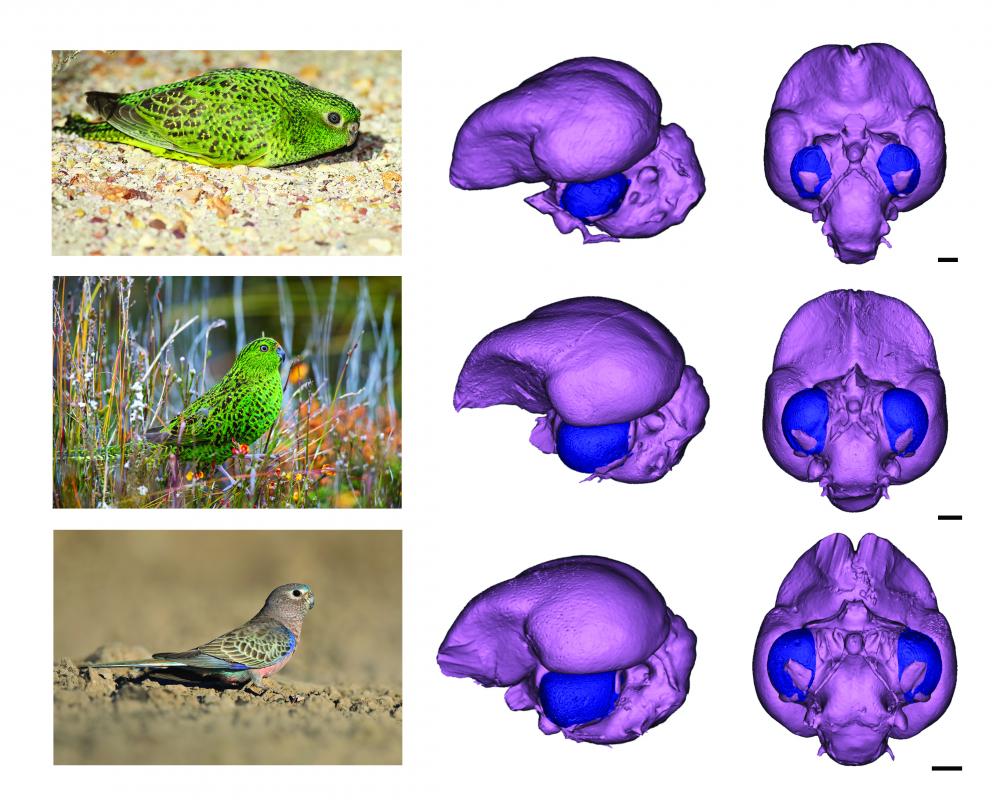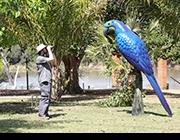
Brain anatomy can yield insights into the sensory abilities of a species. The enlargement of sensory regions can indicate improved sensitivity and/or acuity and the reduction of sensory regions indicates sensory loss. Obtaining brains for such analyses are not always feasible, but digitally constructed endocasts can provide some information of neuroanatomy. These endocasts are providing new insights into the sensory abilities of endangered species, such as the night parrot shown above, as well as that of extinct species.
With funding from the Canada Research Chairs program, we are using endocasts to better understand the sensory abilities of endangered and extinct species, as well as a few species that are otherwise difficult to work with in the wild. Aubrey Keirnan (Flinders University) just completed her Honours thesis with Vera Weisbecker and our lab on the nocturnal letter-winged kite, but several other projects are also available:
1) validating the use of endocasts measurements with actual brains
2) the auditory and visual systems of the critically endangered Plains-wanderer
3) reconstructing the sensory abilities of the extinct Hawaiian ibis Apteribis


